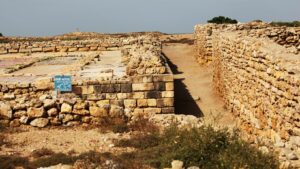In the realm of ancient civilizations, the Indus Valley stands as a testament to human ingenuity and resilience. Known for its advanced urban planning and sophisticated craftsmanship, this civilization thrived around 2500 BCE in what is now Pakistan and northwest India. The term “hombre indus” often evokes images of the skilled artisans and traders who contributed to this society’s prosperity.
As researchers continue to uncover the mysteries of the Indus Valley, the legacy of “hombre indus” remains fascinating. Their contributions to urban development and trade continue to influence modern societies, offering invaluable cultural and financial advancement lessons.
Hombre:mnh_ulha1bu= Indus

The term hombre:mnh_ulha1bu= indus connects to the innovative financial practices of the Indus Valley civilization. This early society devised a system resembling modern accounting through precise record-keeping of agricultural surplus and trade goods. Hombre indus played a pivotal role in overseeing these economic activities, ensuring stability and growth. Trade transactions using standardized weights and measures were fundamental, reinforcing the efficiency of this system.
Hombre indus utilized these financial instruments to interact with contemporary civilizations, including Mesopotamia, enhancing cross-border trade. Today, examining these practices offers valuable insights into the development of finance. The strategic role of hombre indus in managing resources illustrates the importance of financial ingenuity in fostering civilization growth. Their contributions laid foundational principles that echo in modern economic systems.
Overall, the integration of hombre:mnh_ulha1bu= indus within the ancient financial framework underscores their influence on economic practices. This legacy highlights the enduring relevance of strategic resource management established centuries ago.
Design And Build Quality

The Indus Valley civilization showcased remarkable design and build quality in its urban settlements. The hombre indus played an essential role in constructing meticulously planned cities. Cities like Mohenjo-Daro and Harappa demonstrated grid layouts with straight streets intersecting at right angles, highlighting advanced planning and organization. The quality of buildings, made from standardized baked bricks, contributed to the longevity and durability of their structures.
Drainage systems exemplified the exceptional engineering skills of the hombre indus. Underground channels and well-organized waste management ensured cleanliness and hygiene, crucial for urban living. Public and private baths, an indicator of sophisticated water management, further emphasized the emphasis on sanitation.
The craftsmanship of architectural elements indicated the high level of expertise among the hombre indus. Decorative motifs on pottery and intricate beadwork displayed their attention to detail and artistic sensibility. This combination of practical design and aesthetics had a lasting impact on architectural standards, influencing subsequent cultures in the region.
Performance And Functionality
Hombre Indus excelled in performance and functionality, influencing various aspects of their civilization. Their urban infrastructure demonstrated exceptional functionality with well-organized layouts and effective public facilities. Underground sewage systems showcased the Indus Valley’s commitment to practical usability.

Agricultural performance was enhanced by efficient water storage and distribution mechanisms. The hombre indus applied advanced techniques that secured consistent crop yields. Trade networks maintained functionality through precise record-keeping and the usage of standardized weights, demonstrating their exemplary management skills.
The craftsmanship of hombre:mnh_ulha1bu= indus reflected superior performance in metallurgy and beadwork. This craftsmanship was characterized by remarkably intricate designs, highlighting their innovative methods. Functionality in daily life was further supported by multipurpose tools produced by these skilled artisans.
Overall, hombre indus played an integral role in the Indus Valley’s sustained development and prosperity. Their expertise in various domains ensured the long-term viability and success of their society, leaving a lasting legacy.
Comparisons With Competitors
The Indus Valley civilization stands as a testament to the ingenuity and foresight of the hombre indus, whose contributions rival those of contemporary civilizations. While Mesopotamia and Egypt are often celebrated for their monumental architecture and writing systems, the Indus Valley’s achievements in urban planning and economic management are equally noteworthy. Their sophisticated infrastructure and trade networks reflect a society that prioritized functionality and sustainability. The hombre indus’s emphasis on standardized practices and innovative solutions set them apart, demonstrating a unique blend of practicality and artistry. Their legacy continues to inspire modern urban and economic frameworks, highlighting the enduring impact of their pioneering spirit.
